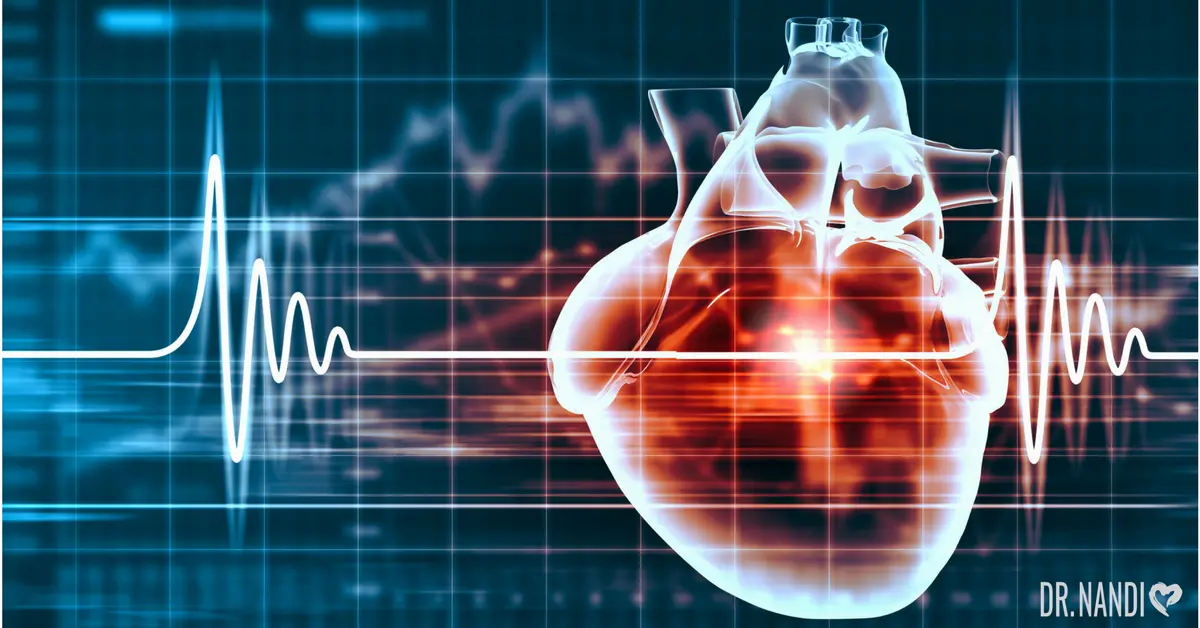Your heart is located between your lungs, in the middle of the chest cavity. The heart, a muscular organ, is responsible for pumping blood through the blood vessels of the circulatory system. Just like other parts of the body, your heart can breakdown and become diseased. Heart disease includes coronary artery disease (disease of the blood vessels), arrhythmias (heart rhythm problems), and congenital heart defects (heart defects you’re born with).
Cardiovascular disease, also known as heart disease, refers to the narrowing of the blood vessels, which can lead to heart attacks, chest pain, or strokes. Heart attacks happen when arteries become blocked, preventing oxygen and nutrients from getting to the heart. Heart disease is preventable and can be treated with healthy lifestyle choices.
Let’s take a look at some of the different types of heart disease, starting with the most common type.
Different Types Of Heart Disease
Coronary Artery Disease
Coronary artery disease (CAD) is the leading cause of death in the United States in both men and women. Coronary heart disease is the most common type of heart disease, killing over 370,000 people annually. CAD happens when the arteries that supply blood to heart muscle become hardened and narrowed. The buildup of plaque – which is composed of cholesterol – collects on the walls of your arteries and causes them to eventually become blocked. This process keeps blood and oxygen from reaching the heart, which can create angina (chest pain) and even result in a blood clot closing off the flow of blood to the heart, creating a heart attack.
Heart Failure
Heart failure occurs when your heart is not able to pump blood like it should. This disease develops after other conditions like diabetes, obesity, or high blood pressure have damaged or weakened the heart. In some cases, heart failure is not the result of a weakened heart, but can occur if the heart becomes too stiff. Sadly, not all of the conditions that cause heart failure can be reversed. However, lifestyle changes can have a positive effect on these conditions and improve the quality of life.
Pericardial Disease
When the sac surrounding your heart – known as the pericardium – becomes diseased or inflamed, it causes a condition referred to as pericarditis. This disease can be caused by a viral infection or by inflammatory diseases like lupus and rheumatoid arthritis. It can also be the result of an injury or trauma to the pericardium, which includes open heart surgery.
Arrhythmias
Your heartbeat is created by a series of electrical impulses. When the beat is irregular from the normal sequence, it is known as an arrhythmia. When the beat is severely irregular, it can affect how your body receives the oxygenation it requires. When the heart pumps blood inefficiently, organs can’t function properly and may shut down or be damaged.
Heart Valve Disease
The heart has four valves which open and close, directing blood flow between the heart’s four chambers, the lungs, and blood vessels. Defects in the valves make it difficult for them to open and close properly. This affects the blood flow, causing it to be blocked or allowing blood to leak through the valve. Some of the conditions causing heart valve disease include: rheumatic fever, congenital heart disease, high blood pressure, coronary artery disease, and even a heart attack.
Cardiomyopathy
Cardiomyopathy is disease of the actual heart muscle. The heart becomes enlarged, thickened and stiff. It can even have difficulty pumping because the diseased tissue turns to scar tissue. As the cardiomyopathy progresses, the heart weakens and is unable to properly supply the body with oxygenated blood, and soon the heart may not be able to function with normal electrical rate and rhythm. Eventually, arrhythmias and heart valve issues usually develop.
Congenital Heart Defects
When a baby is developing in the womb and something goes wrong with the heart, this is known as a congenital heart defect. These defects can be detected sometimes before the child is born and may cause problems at birth which may require medical or surgical treatment. Other times, these defects are undetected at birth and don’t surface until later in life. Some of the defects that occur are septal defects, pulmonary stenosis, and ductus arteriosus.
Other Forms Of Heart Disease:
- Acute coronary syndrome: a heart attack and unstable angina
- Angina: chest pain that is a symptom of coronary heart disease; there is a stable and unstable form
- Aortic aneurysm and dissection: these affect the aorta
- Atherosclerosis: involves a plaque build up in the arteries
- Atrial fibrillation: a type of arrhythmia with rapid heartbeat
- Congestive heart failure: the heart does not pump as well it should
- Peripheral arterial disease: it involves narrowed and stiffened arteries
- Rheumatic heart disease: heart valve damage due to rheumatic fever
Risk Factors Of Heart Disease
- High blood pressure
- High cholesterol
- Diabetes
- Unhealthy diet
- Being overweight or obese
- Lack of physical activity
- Tobacco use
- Alcohol consumption
- Drug use
- Stress
- Genetics
- Family health history
- Cancer treatment, including radiation and chemotherapy drugs
Symptoms Of Heart Disease
- Chest pain, chest discomfort (angina), chest tightness, chest pressure
- Shortness of breath
- Weakness of dizziness
- Irregular heart beats
- Faster heartbeat
- Nausea
- Sweating
- Pain, numbness, coldness, or weakness in arms or legs
- Pain in neck, throat, jaw, back, or upper abdomen
Complications Of Heart Disease
- Heart failure
- Heart attack
- Stroke
- Aneurysm
- Peripheral artery disease
- Sudden cardiac arrest
What Is A Heart Attack?
A heart attack happens when a part of your heart muscle does not receive enough blood flow to function. Every year 580,000 people get their first heart attack, and 210,000 more affect those who have already suffered from a heart attack. The longer it takes to get treatment, the greater damage your heart muscles will suffer. Heart attacks can be silent. Many people do not recognize a heart attack, making it increasingly important to seek help even with the slightest symptoms.
Signs Of A Heart Attack
Some heart attacks are sudden, but most start with a mild discomfort more slowly. Call 911 if you feel:
- Chest discomfort, pressure, fullness, pain, or squeezing in your chest that lasts for more than a few minutes, or keeps coming back
- Discomfort or pain in your other body, including your arms, neck, back, and stomach
- Shortness of breath (this can occur with or without chest pain)
- Cold sweat
- Feeling lightheaded
- Nausea
- Fatigue
- Fainting
Men vs. Women:
Both men and women tend to experience chest discomfort as their main warning sign, but their symptoms may be different. Women are more likely than men to experience nausea, vomiting, back pain, jaw pain, and shortness of breath.
Remember, when it comes to heart attacks, minutes matter. Call 911 to get lifesaving treatment as soon as possible.
Diagnosis, Treatment, And Care For Heart Disease
Your doctor’s visit will likely include:
- Physical examination
- Measuring your blood pressure
- Measuring your cholesterol
- Measuring your blood sugar levels
- Assessing your risk factors, including your weight, eating habits, physical activity levels, and whether or not you smoke tobacco
- Understanding your family history
- Understanding your health history
- Understanding your symptoms and concerns
Diagnostic testing may include:
- ECD or EKG: to measure the activity, regularity, and rate of your heartbeat.
- Echocardiogram: to take a picture of your heart through ultrasound
- Exercise: to measure your heart rate during exercise, usually on a treadmill
- Chest x-ray: to take a picture of your heart, lungs, and organs in your chest area.
- Cardiac catheterization: to check blockages in your arteries through a thin tube
- Coronary angiogram: to check for blockages through an x-ray
Treatment may involve:
- Lifestyle and dietary changes
- Medication
- Pacemaker
- Surgery
Heart Disease Prevention
- Visit your doctor to find out about your personal risk factors.
- Quit smoking.
- Exercise at least 20 – 30 minutes a day.
- Eat a whole foods, healthy diet. Avoid processed and fatty foods.
- Lower your stress levels.
- Manage diabetes.
- Maintain a healthy cholesterol level.
- Maintain a healthy blood pressure.
- Medication and/or surgery may be required in certain cases.
Conclusion
Heart disease is the number one killer in the U.S. and a major cause of disability. High blood pressure, high cholesterol, and smoking are all risk factors for heart disease.
Several other medical conditions and lifestyle choices put people at risk for developing heart disease, including diabetes, obesity, poor diet, sedentary lifestyle, and excessive alcohol us e. Reduce your risk of heart disease by controlling blood pressure, lowering cholesterol, getting proper exercise, and staying away from smoking and alcohol.



















